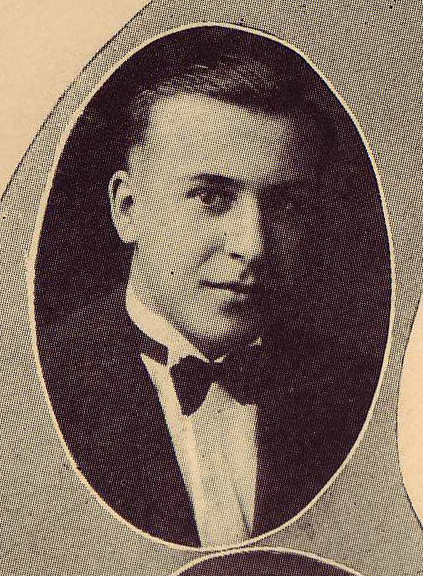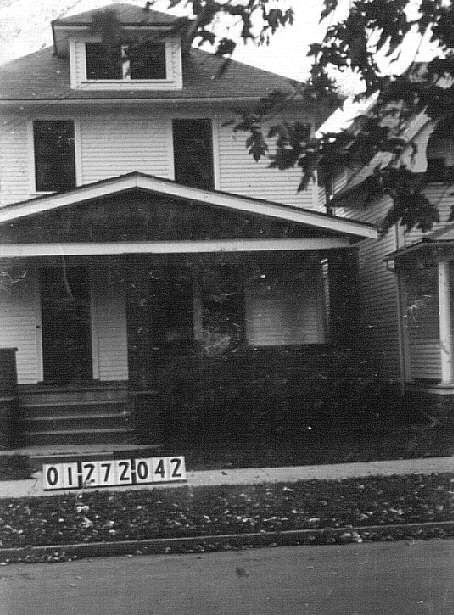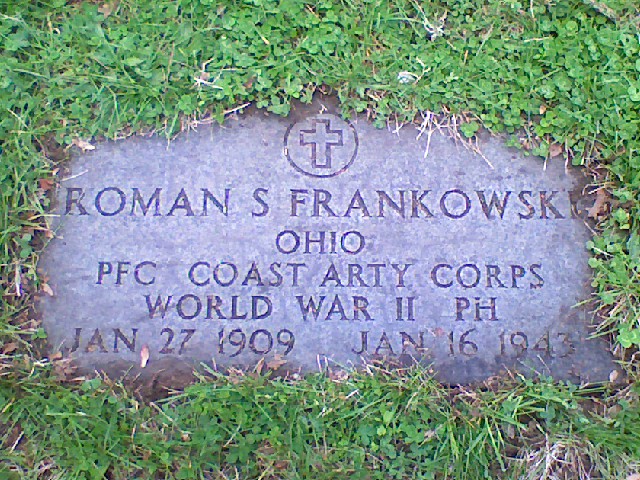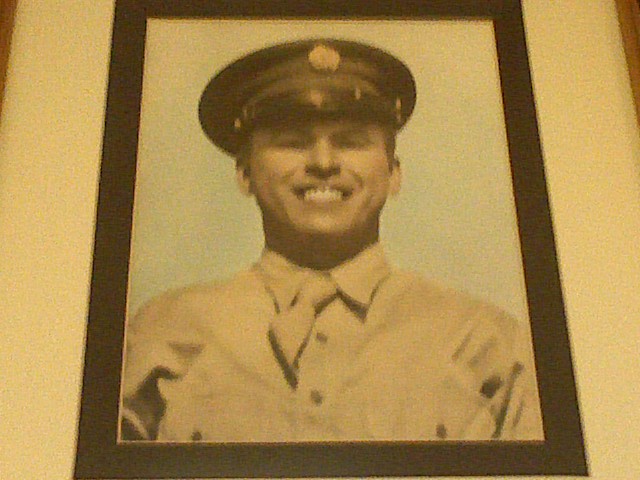HI and a warm welcome. Let's see what my efficient company and I can come up with!
There is one post in our forum that mentions them being 5th Army, but that would be after the fact, because he passed on in Jan 43.
http://208.109.212.45/forum/index.php?showtopic=491
==========================
The following is from this page: http://www.usswashington.com/dl08no42b.htm
...The tincan follows Bell’s lights to the port’s merchandise pier, and goes alongside like an excursion boat on the Mississippi. Wilson’s L Company charges ashore. One platoon silences a French machine gun team, and then races inland 300 yards to grab the Shell Oil Company’s storage facility and unloading cranes. Both destroyers receive Presidential Unit Citations for their work.
While the troops from the destroyers move into Safi, the rest of the invading force moves in. 1st Battalion of 47th Infantry lands at Beaches Red and Blue, north of Safi at 5 a.m., and head inland. At 5:10 a.m., light tanks and infantry reinforce the men from Cole and Bernadou. As the sun rises over Safi, the Americans seize the harbor, railroad station, post office, and police headquarters, disarming the cops.
As the Americans move cautiously inshore, they find dozens of natives grouped around them. The Army’s historian records, "Street intersections were crowded with natives turning their heads like a tennis gallery in trying to watch the exchange of fire. The wounded were poked and jabbered at."
A platoon from 47th Infantry slugs its way to Pointe de la Tour, attacking the big guns from the rear. The Americans charge in and find the fire control tower shattered by New York’s 14-inch shells. Among the dead Frenchmen is the officer in command of naval elements in the Safi region. The Americans hoist Old Glory, which flaps majestically in the breeze. Delighted GIs stand at attention and salute.
At Yellow Beach, south of Safi, 2nd/47th prepares to go ashore at 4 a.m. Maj. Louis Gershenow’s 1,450 men and 1,500 tons of vehicles are on the transport Dorothea L. Dix. As they unload, a truck being winched over the side swings out of control and crashes into the side of the ship. A can of gasoline on the truck is crushed, spraying fuel onto the hot motor of the landing craft below. That in turn sets of an explosion that covers the landing craft, the truck, and the Dix. Ammunition in the landing craft also cooks off, shaking the Dix, and sending a pillar of flame into the night sky. The mishap delays the landing at Jorf el Houdi until 8 a.m.
Back at Safi, General Ernest Harmon paces the bridge of Harris, doing what most modern generals do in battle – wait for reports. At 5 a.m. he gets a bad one: Cole and Bernadou have run aground, all crew and most troops lost. Harmon struggles to grapple with that one for 15 minutes, when a follow-up arrives: cancel the first message, both ships have done their jobs, and the landing is proceeding.
That’s enough communications confusion for Harmon. A World War I combat veteran, he won’t rely on overworked communications clerks. He climbs down a net, into a landing craft, and takes a 40-minute ride to the Safi beach. When he arrives, Harmon finds a large number of men lying face-down on the beach, their boots at the water’s edge. Harmon is puzzled as to the cause of this over-caution, as the only activity is the occasional sniper bullet.
The general spots a young captain, and summons him. "Why are your men lying there with their feet in the water?"
"Well, sir," the captain says, "because we’re under fire."
"Yes," replies Harmon, "I realize you are. But how many people are shooting at you?"
"About six, sir."
Harmon points to a building 200 yards away. "It’s obvious the snipers are in there. Send about 12 men to clean out the house, then get going with the rest of your company to your objective."
The captain eagerly jumps to obey, and in a few minutes, the snipers are defeated.
Harmon watches the action and says to his aide, "Those men will be fine soldiers once they have suffered through the stage fright of their first hostile action."
Next, Harmon wants to know where his tanks are. Eight M3 Stuarts have been landed from small lighters, but faulty batteries and drowned engines leave the little tanks on the beach. One lighter is lost, and another has broken down with engine failure. Without tanks, Harmon’s force will have a tough time against the French S35 armor.
He paces the piers, tense, awaiting the seatrain Lakehurst, which is bringing M3 Lee tanks, and the Titania, which will unload more M3s, at the Safi pier.
At Port Lyautey, General Lucian Truscott’s Goalpost Force is finally ready to attack. The sea is calm and the surf is unusually light. Col. Frederick J. de Rohan’s 60th Infantry Regiment, the "Go-Devils," has been waiting for hours. The landing craft go in at 5:40 a.m., with Maj. John H. Dilley’s 2nd Battalion headed for Green Beach south of the mouth of the Sebou River at Mehdia Plage. As the landing craft move in, the lights on shore go out. Then searchlights illuminate the scene, picking up the landing craft.
Seconds later, a red flare burst over the shoreline, and French 75mm and 138mm guns open fire on the invaders. The destroyer Roe and the battleship Texas cut loose with return fire, knocking out the searchlights, silencing the batteries. In the confusion, Dilley’s second wave gets ashore ahead of the first wave.
Meanwhile, Maj. Percy DeW. McCarley’s 1st/60th splashes ashore unopposed at Blue Beach, south of Green, unopposed. McCarley is relieved by that, but he can’t recognize any landmarks. He and his battalion staff break out the maps and find out that they’re a mile-and-a-half north of their designated beaches. The day is not starting well.
Lt. Col. John J. Toffey’s 3rd/60th is destined for Red Beach and Red Beach Two north of the Oued Sebou, but their boats get lost in trying to form up from their control ship, the Osprey. The jumble of milling boats, in no order, starts heading ashore at 6:35 a.m., in broad daylight.
As the American landing craft go in, so do four French fighter planes (De 520s or American-built Hawk 75s, known to Americans as the P-36), which strafe the incoming landing craft and men on the beach. Their bullets and bombs swamp two landing craft, dumping Go-Devils into the Atlantic Ocean.
The 692nd Coast Artillery Regiment, part of this invading group, reacts as soon as it reaches the beach. The gunners set up their anti-aircraft guns (Coast Artillery is being converted to the anti-aircraft role) and shoot down two attackers, their first kills of the war.
On the beach, Toffey struggles to make sense of maps and to organize his battalion. The first part is easy. He’s five miles north of his designated beach. The second part is harder. His battalion is scattered all over the beach, along with its equipment. He rounds up his men, and leads them on the five-mile march to the airport. The men are burdened down, having to carry their machine guns, mortars, shells, bazookas, rockets, and ammunition boxes.
While the 60th Regiment moves in and out, Col. Demas "Nick" Craw and Maj. Pierpont Hamilton, in dress uniforms, struggle down rope ladders in the first wave. Baffled GIs gape at the two officers, in leather and brass, during the run-in. Both officers, who speak fluent French, are Truscott’s emissaries to the French command...
===================
You may also try contacting my buddy at WWII Connections. He has an extensive WWII library with over 5000 books. Here's his site:
http://www.ww2connections.com/
===================
Actually there was still A LOT of fighting going on in North Africa until May of 43.
Allied Counterattacks
On Oct. 23, 1942, the greatly reinforced British forces launched their own offensive (for an account of the fighting, see Alamein). To save his forces Rommel began one of the longest sustained retreats in history. Frustrating British attempts to engage him, he abandoned Tripoli, which fell to the British on Jan. 23, 1943. Rommel ended his retreat only when he took up a defensive position along the Mareth Line in S Tunisia.
Meanwhile, American and British forces landed (night of Nov. 7–8, 1942) at Algiers, Oran, and Casablanca, thus occupying the territory to the west of Rommel. Under the command of Gen. Dwight D. Eisenhower, Allied forces pushed toward Tunisia. The Germans, however, rushed reinforcements from Italy. Axis forces in Tunisia now faced the British 8th Army in the south, Eisenhower’s force on the west, and the Free French in the southwest; but the hilly terrain favored the defense. German counterattacks in Tunisia pushed west through Faid Pass (Feb. 14, 1943) and Kasserine Pass (a week later), from which they were dislodged only after heavy fighting. In the south the Allies forced Rommel from the Mareth Line and moved up the coast to take Sousse in April.
At the beginning of May, the Axis defense crumbled, and on May 7, 1943, the Americans took Bizerta and the British took Tunis. About a quarter of a million Axis soldiers capitulated on May 12. In E Africa the fighting had earlier resulted in complete British victory; by 1942, Italian and British Somaliland, Eritrea, and Ethiopia were reconquered.
============
Also see: http://www.anarmyatdawn.com/documents.htm
This will give you a good feel of what was transpiring at the time, by looking over the historical documents.
============
1943, Jan. 24
Tripoli was occupied by the British Eighth Army, which pursued the retreating Axis forces into Tunisia.
Jan. 14–23
Conference at Casablanca, Morocco, with President Roosevelt, Prime Minister Churchill, Gen. Giraud, and Gen. de Gaulle attending. The relationship between Giraud and the de Gaulle “Fighting French†Party remained undefined, and Eisenhower took command of the unified North African operations. Plans for reducing the Axis powers to “unconditional surrender†were discussed at Casablanca but not disclosed.
============
Let's see what else I can come up with in my books too. This should give you a start.
===================
http://ww2db.com/battle_spec.php?battle_id=24

![]()
![]() .. other than a great newphew ( trying to find his phone number).
.. other than a great newphew ( trying to find his phone number). ![]()








